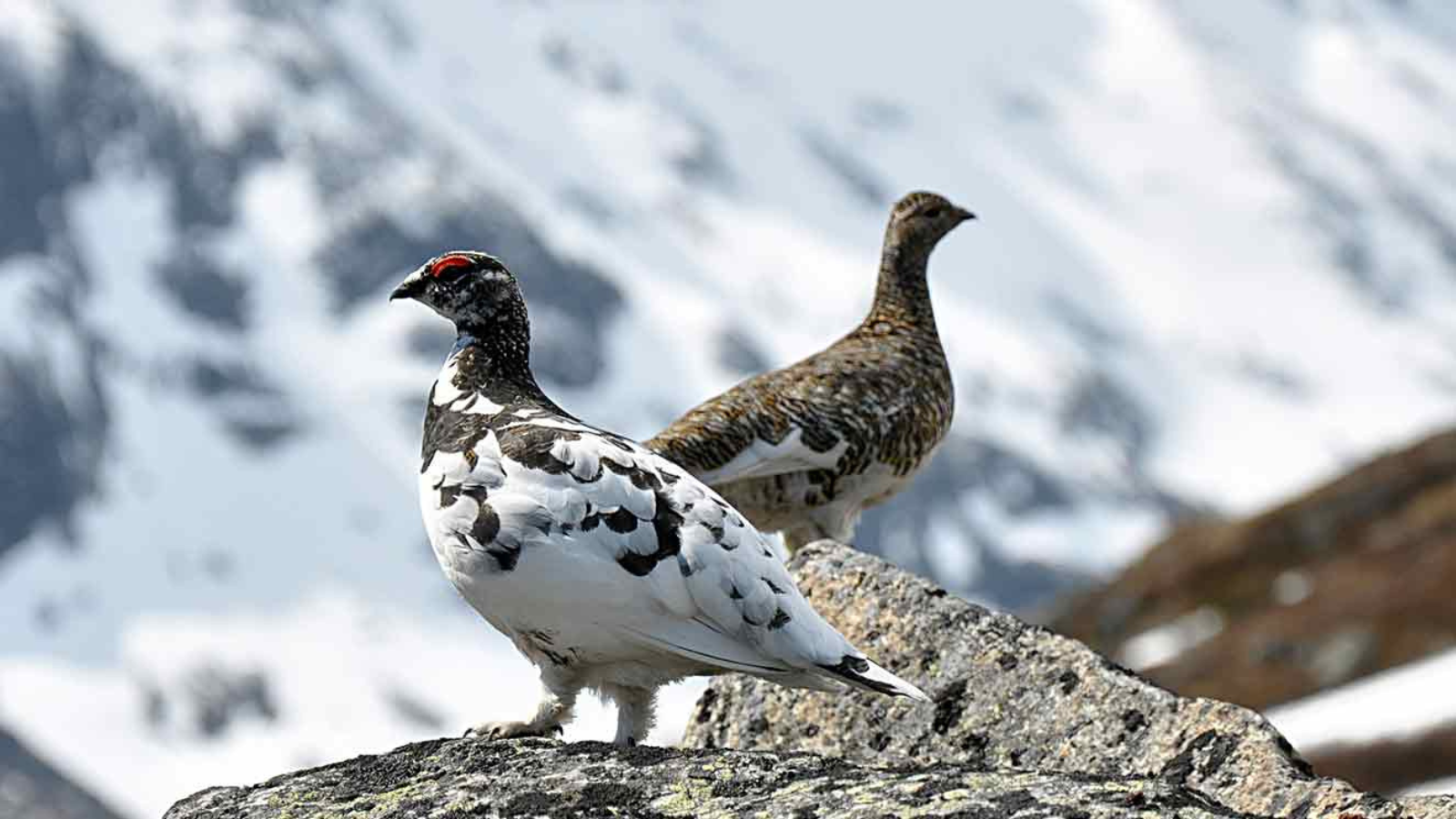As the winter weather moves in and temperatures drop, we all reach for our warm winter coats – and many animals do the same. Badgers and foxes for example put on body fat, or grow thicker fur. But when the snow starts to fall and the landscape changes colour dramatically, some animals go to more extreme lengths. During autumn, hormonal signals trigger a change of colour in fur or feathers from browns and greys to white.
Here we look at some UK animals who transform to snowy white in winter:
Ptarmigans
The smallest species of the grouse family, these little birds live in isolated areas up in the mountains of the Scottish Highlands. In summer, they have a mix of brown and grey feathers with a white breast, making them hard to spot against their rocky background. By winter, they have a bright white plumage all over, blending in with their Arctic-Alpine habitat to avoid detection by predators. The thick, winter white plumage extends down the ptarmigan’s legs and feet for extra cover
Stoats
Not all stoats change colour for winter, but up in northern Scotland, these weasel-like mammals gradually shed their brown fur for a white coat to blend in better with the snow, though the tips of their tails remain black. Having this white coat is known as being in ermine. As stoats are predators, their white coats help them maintain their camouflage whilst hunting in winter. They are fearless hunters and can take a rabbit up to five times their size!
Mountain hares
Mountain hares can be found in upland areas of the Scottish Highlands and northern England. In summer, their grey-brown fur blends with scrubland, heather moorland and rocks, and in winter they sport a coat of dazzling white. The winter coat is essential to their survival, allowing them to stay camouflaged and avoid predators such as birds of prey. They often seek out wooded areas for extra protection from both predators and the cold.
Protecting biodiversity
At The Future Forest Company, our holistic land management plans go through a comprehensive process to ensure that our woodlands protect biodiversity and mitigate climate change. On our sites across Scotland and northern England, we are restoring degraded woodland by planting a diverse species mix of predominantly native broadleaves, to help nature’s recovery and tackle the climate crisis.

Be sure to keep an eye out for the rest of our ‘Walking in a Winter Woodland’ blog and giveaway series to learn more about what you might expect to find on your next winter walk and stand a chance to win more wonderful prizes!




